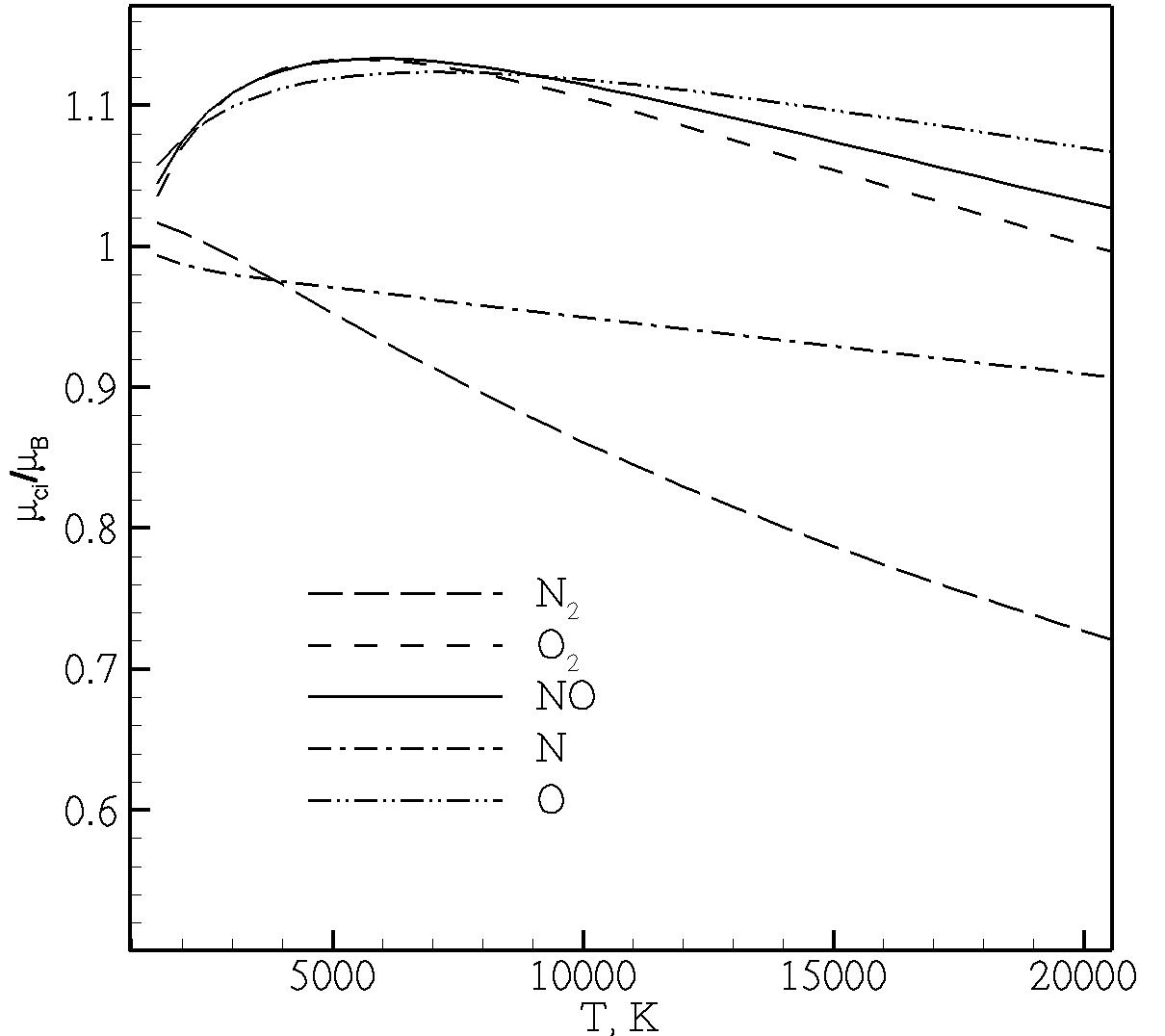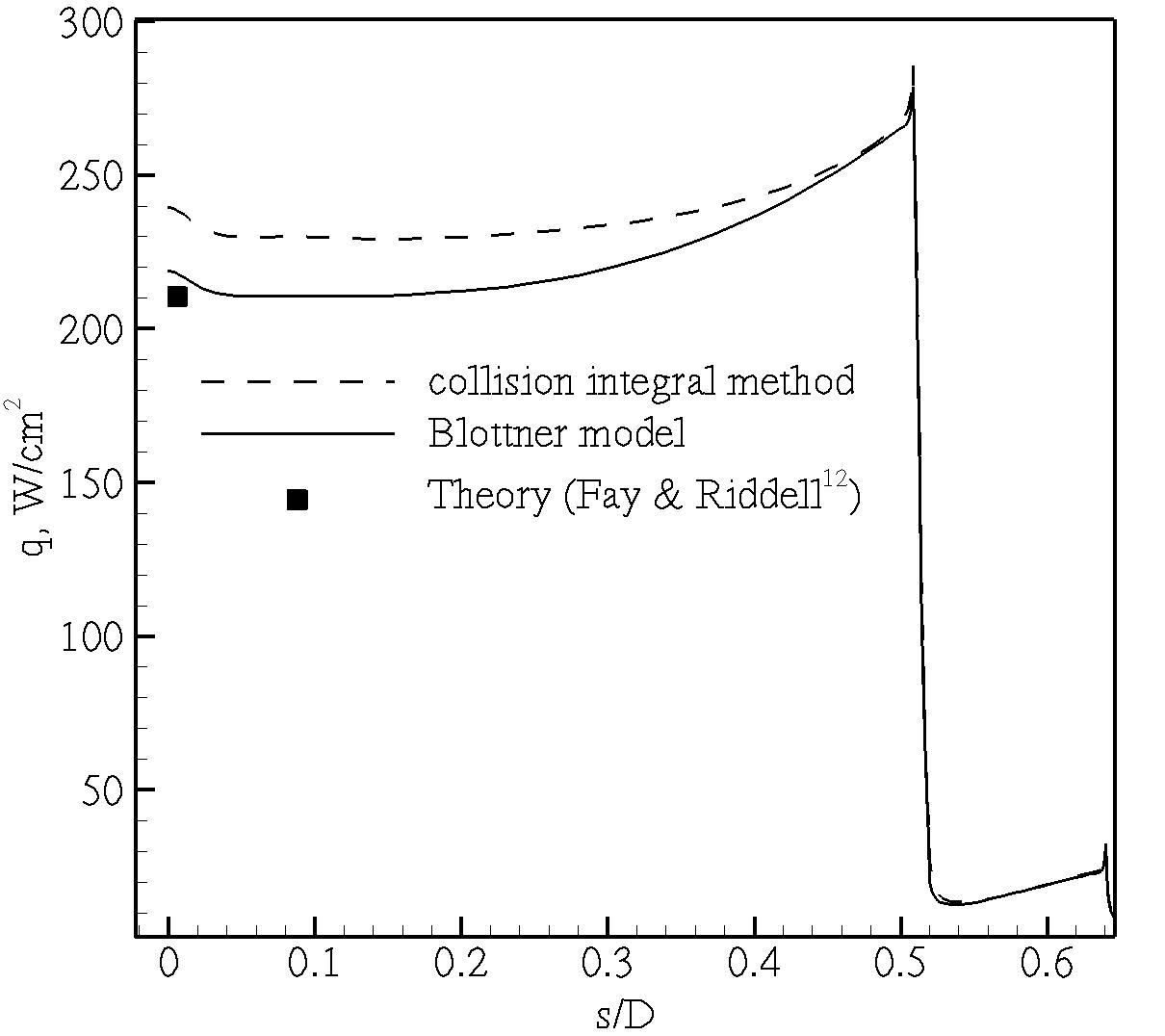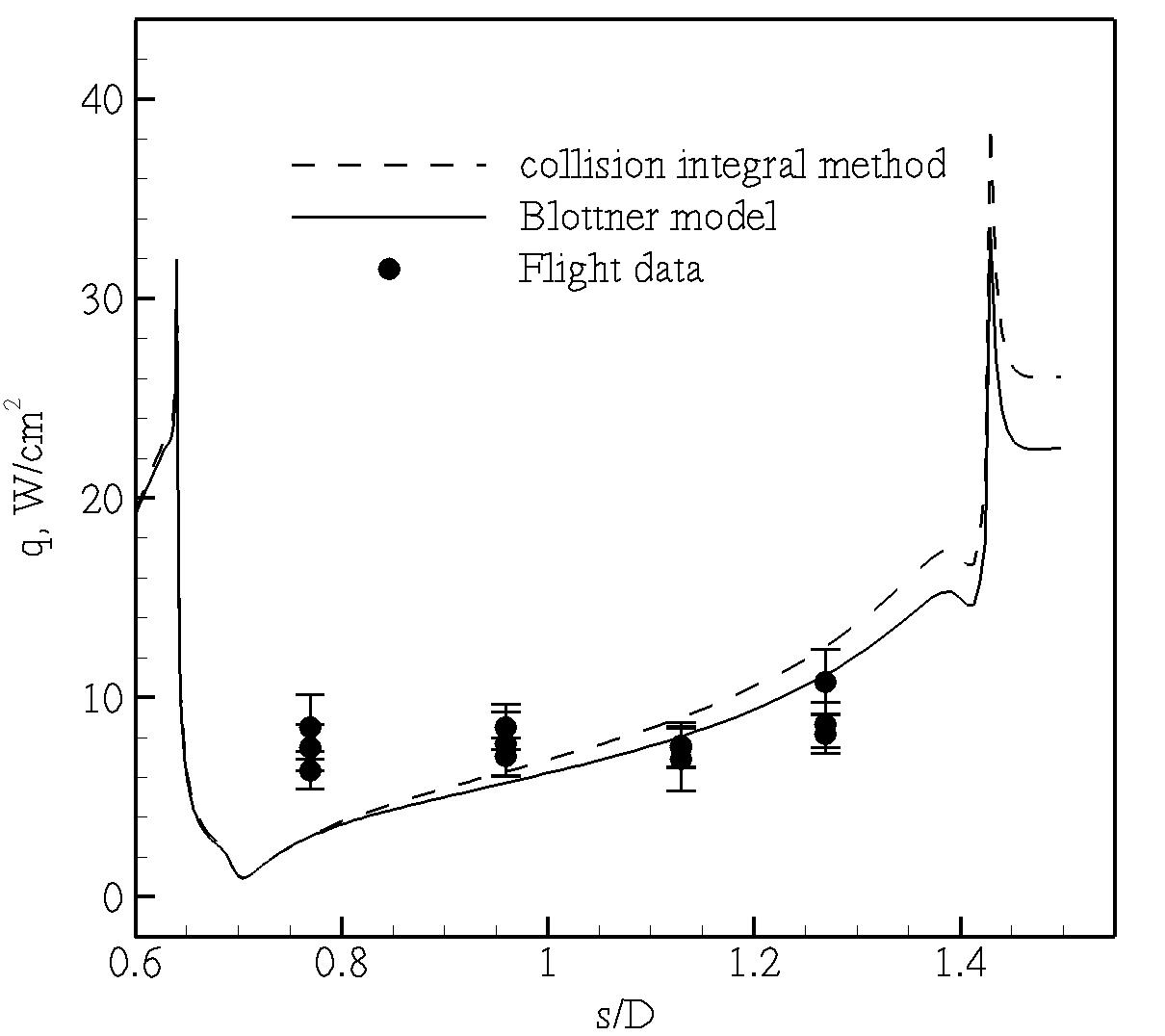Effect of Transport Coefficients on Aero-thermal Predictions of Reentry Flows
The effect of viscosity coefficient on aero-thermal prediction of re-entry flows is studied by computing
the flowfield with different formulations for individual species viscosity. Blottner viscosity model and collision integral
method are used to calculate the species viscosity. The surface properties of FIRE II re-entry capsule at 35 km altitude,
computed using the above two viscosity formulations are compared with the in-flight measurements. The stagnation point
heating rate predicted by collision integral method is 10 % higher than that given by Blottner model. Afterbody heat
transfer rate computed by both formulations are within the scatter of flight data. Shock position predicted by both
methods differ slightly at the shoulder region. However their effect on surface pressure is minimal.
Ref:Reddy, D.S.K., and Sinha, K., "Effect of Transport Coefficients on Aero-thermal Predictions of Reentry Flows
Symposium on Applied Aerodynamics and Design of Aerospace Vehicle (SAROD 2009), December 10-12, 2009, Bangalore, India
.
Representative results:

Variation of species molecular viscosity with temperature.


Forebody and afterbody heating rates as computed using different mixture viscosity models.

